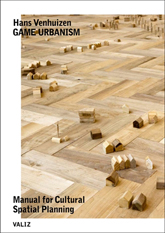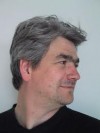Op 25 augustus 2011 gaf Hans Venhuizen een lezing in het Center for architecture in New York over Game Urbanism, het boek dat Venhuizen in 2011 uitgaf.
Beluister hier het interview (Engelstalig).
In Game Urbanism, Hans Venhuizen deals with the culture of spatial planning. Venhuizen advances a broad understanding of culture that encompasses cultural history, heritage, architecture and art, as well as the culture of the current residents of a region and the idiosyncrasy of a place. In his search for a more specific identity for cities and areas, Venhuizen links the worlds of culture and space to each other in different ways. In this, his focus is always on the culture of spatial planning itself, and the game is his most important instrument. The relation between playfulness and seriousness is a key feature in all of Venhuizen’s projects. The game is capable of involving participants in an assignment on an equal basis. Moreover, it simplifies complex situations, reveals the wishes and interests of those involved, and provides pleasure in uncertain processes of change. With case studies, context, methods and reflection, this book shows a fundamentally different way of looking at how we deal with space, one in which culture assumes a natural and decisive role.
Across Europe, cities are rapidly changing. How to account for the requirements of culture and humanity amid urban planners’ brisk intentions? Hans Venhuizen is a specialist in what he calls culture-based planning, which takes existing culture–architecture, art and the contemporary culture of an area’s inhabitants–as the point of departure for planning efforts. Venhuizen is well known for his use of ingenious large-scale social games to identify the culture and explore the interests at stake: one such game, called “Life, the Game,” involved 20 participants in reenacting the entire life cycle. Game Urbanism: Handbook of Processes of Spatial Change presents Venhuizen’s working practices and shows how they can be applied by anybody (citizens, planners, artists, architects, local authorities, administrators) working in spatial planning, architecture, community arts or other creative industries. Charles Landry, author of the highly influential The Creative City (2000) and The Art of City Making(2006), contributes an introduction.



 Hans Venhuizen onderzoekt de rol van cultuur in de ruimtelijke ordening, ook wel aangeduid met het begrip culturele planologie. Hij richt zich op vestigings- en planningsprocessen in de ruimtelijke ordening en neemt daarbij cultuur als vertrekpunt.
Hans Venhuizen onderzoekt de rol van cultuur in de ruimtelijke ordening, ook wel aangeduid met het begrip culturele planologie. Hij richt zich op vestigings- en planningsprocessen in de ruimtelijke ordening en neemt daarbij cultuur als vertrekpunt.